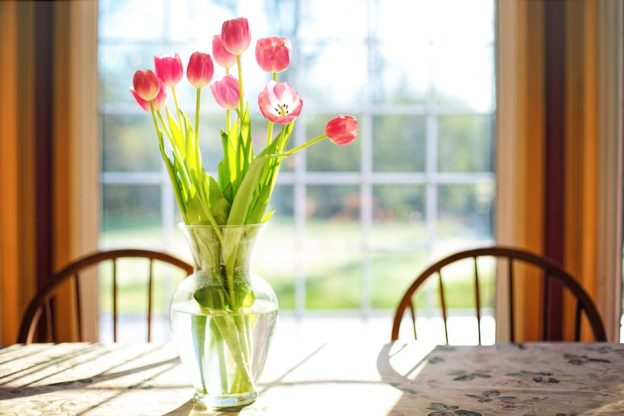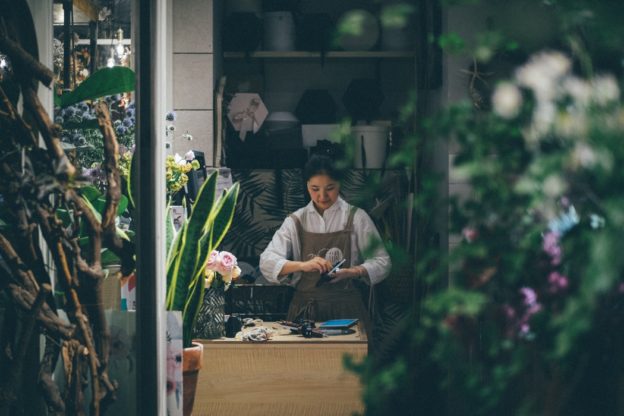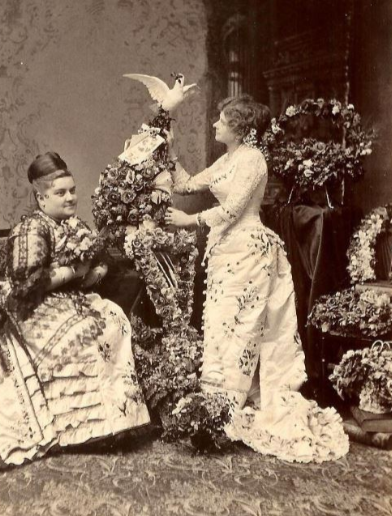18 Interesting Facts About Funeral & Sympathy Flowers We Bet You Didn’t Know
April 24th, 2019
Everyone knows funeral & sympathy flowers are a large part of the funeral service.
But does everyone know how they came to be such a large part of funeral service? Or why, or through which cultures did they become so popular?
Thankfully, we answer these questions and more with these 18 fun, weird, and interesting facts on funeral and sympathy flowers below:
1.The act of sending funeral flowers is an ancient tradition.
New discoveries reveal dates as far back as the Stone Age! The activity of arranging placing flowers around the deceased was well documented by Dr. Ralph Solecki.
In 1951, during his famous excavation in the Shanidar Cave in Northern Iraq, he discovered several burial sites with flower fragments that were later discovered to have been there since 62,000 B.C.
This discovery was eventually noted in the Guinness Book of World Records as the world’s oldest form of human ritual! (source)

2. Since the art of embalming has been slowly developed over centuries, flowers were traditionally used to cover the unpleasant odors of a decaying body.
Depending on many factors such as the environment, the condition of the body and the time at which it was buried, flowers were used in varying quantities as a way of tolerating the smell of the deceased to those who came to pay their final respects. (source)
3. Flowers have a spiritual significance.
They’ve always been used to symbolize the life cycle from birth through death.
4. In some Asian countries, floral arrivals after the funeral service signify a death wish for someone else in the family.
So be careful on your expected delivery date next time you send funeral flowers over to Asia! (source)
5. In Latin America, yellow is a color associated with death and funerals.
Unlike other Western countries, where white and red are more popular. (source)
6. If you want to keep your funeral flowers around longer, keep them away from direct sunlight, heat, and fruit.
The ethylene gas that apples and pears emit can cause your flowers to quickly wilt. We’ve also learned to make sure your vase is very clean, and to add a few drops of bleach to the water to help prevent bacteria from growing. Lastly, don’t forget to change your flower water, and cut a small portion off of the stems for the same reason! (source)

Photo credit: Charleston Flower Market
7. Believe it or not, Martha Stewart gave flowers more fame in the 90’s.
One florist says “We could never sell 36 open roses in a hand-tied bouquet before Martha. That was really what she did.” (source)
8. Florists aren’t immune to the impact—conscious or subconscious—of the heightened emotions surrounding weddings and funerals.
One florist writes about how creating floral arrangements for a funeral sparked a recurring dream: “In the dream, I woke up the woman that died to ask her if she liked the flowers. Her answer was no. She informed me that she had always hated flowers … I remember feeling silly and spooked at the same time.” (source)

9. In 1914 C. Austin Miles wrote the famous funeral hymn “In the Garden” which later became the most frequently sung hymns at funerals in the United States.
The hymn also began a movement in funeral service whereby the mortuary practices of the country would revolve around the body reposing in the garden. Here is the hymn below: (source)
“I come to the garden alone,
While the dew is still on the roses.”
Refrain:
“And He walks with me and he talks with me
And He tells me I am His own…”
10. The “In the Garden” hymn theme was so strong at Protestant funeral practices in the United States that funeral homes began to develop facilities based on them.
They would use an indoor garden as the backdrop where the deceased loved one would lay for the funeral ceremony. (source)

11. Actually, throughout the ages, humankind has equated death with sleep which was usually in a garden full of flowers.
The Song of Roland says “May God receive all our souls among his holy flowers”. (source)
12. Even the Greco-Egyptian text from the middle of the 4th century, called The Prayer Book of Serapion, contains this prayer for the dead.
It says “May his spirit rest in a green and tranquil place”. (source)
13. The importance of flowers in funeral service was also probably exemplified by the creation in Mid Western funeral practices of the role of the “Flower Lady”.
The flower lady was analogous to the pall bearer role, but instead of carrying the casket this group of women (usually six) would carry the flowers from the place of the funeral to the flower vehicle, and then would assist in setting them up at the cemetery. (source)

14. Lilies remain the most popular flower choice for funerals, stemming from their symbolism of the innocence of the soul.
A white lily is especially an apt choice for someone who had lived a short life. (source)
15. Roses, carnations and lilies are today among the most popular flowers people use to express sympathy and condolence.
Runners up include tulips, chrysanthemums and gladiolus. (source)
16. The ancient Egyptians considered the lotus to be a sacred flower, often representing resurrection and rebirth in ancient burial rituals.
The lotus flower thrives in wetlands and rivers and can lie dormant for many years during times of drought, springing to life upon the return of water. (source)
17. In Russia (and many other former Eastern Bloc countries), when bringing flowers to a funeral or in consolation to the bereaved, you must give an even number of flowers.
Conversely, whenever you give flowers to someone living, they must be an odd number. It is believed that this superstition stems from the tradition of giving two flowers to fallen soldiers — one for them, and one for God. (source)
18. The US flower and ornamental plant market was valued at wholesale by USDA at $437 billion in 2015.
No one knows what percentage of that is funeral flowers, but we can guess that it’s a pretty large chunk of flower sales! (source)
Do you know any fun facts on the history of funeral flowers? Which facts above were a surprise to you? Tell us in the comments below!
PS. Try The Sympathy Store for free!
funeralOne’s solution, The Sympathy Store, is a completely done-for-you funeral eCommerce platform. To learn about how you can get The Sympathy Store on your funeral home’s website, click here to talk to one of our website specialists.




[…] post 18 Interesting Facts About Funeral & Sympathy Flowers We Bet You Didn’t Know appeared first on funeralOne […]
A black or dark rose means farewell to the deceased . It also can mean farewell to the deceased . Be careful in sending black roses to the living because it can mean the end of a relationship or that one is going to a place they do not expect to return from.
Thanks for this information Minister Cynthia! We appreciate your input.
[…] I’ve never really imagined myself to be the type to give someone a “Sympathy Gift”. […]